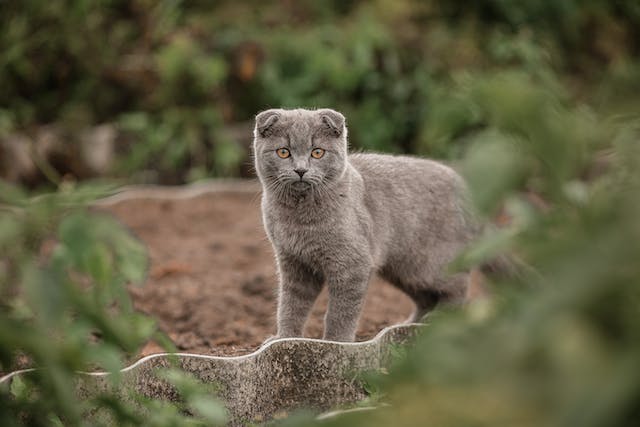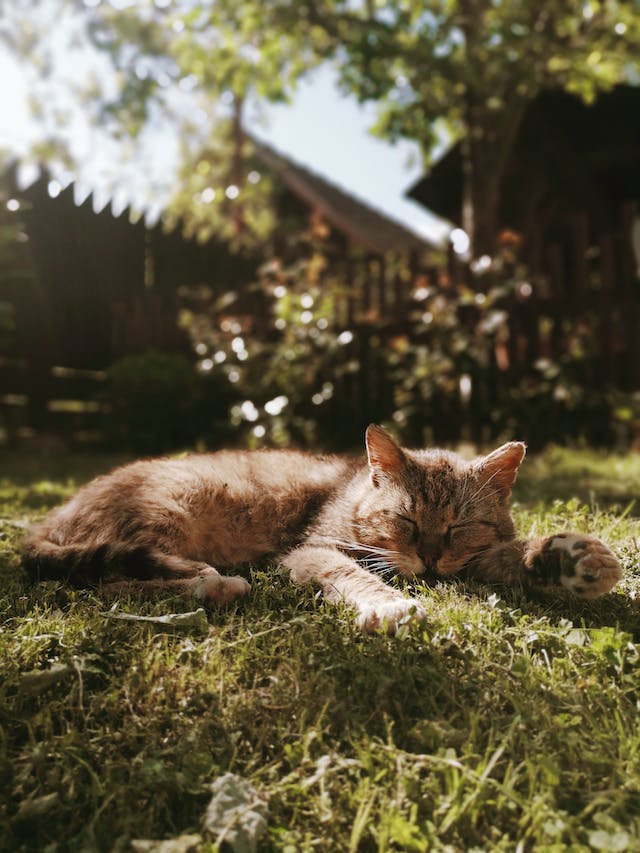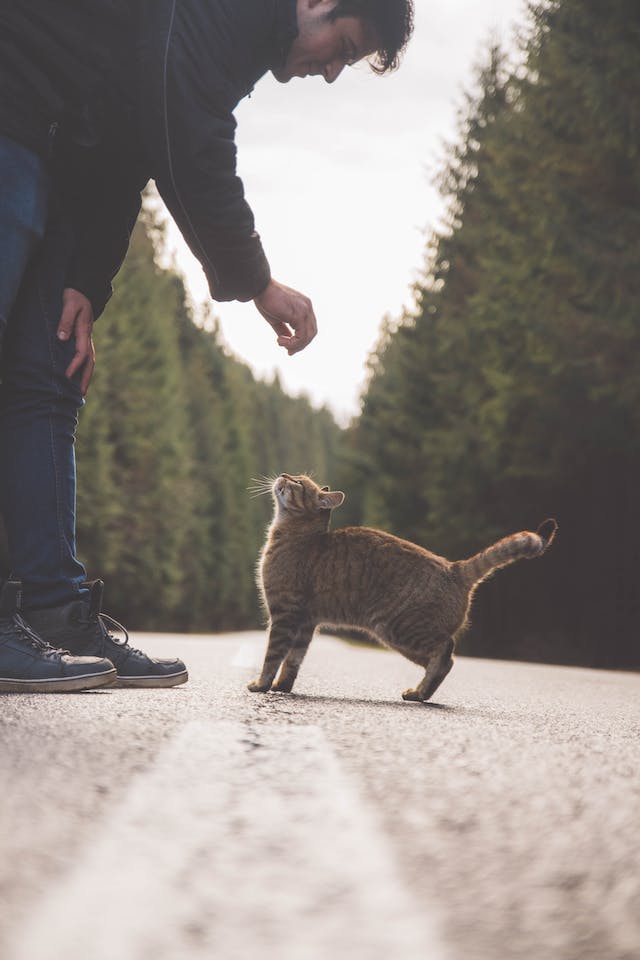
How to Plan a Missing Cat Search
Losing your cat can be a scary and heartbreaking experience. When a cat goes missing, it can be stressful for both the owner and the cat. However, it’s important to start searching for your cat as soon as possible to increase your chances of finding your feline friend. In today’s blog, we’ll give you some top tips for conducting a missing cat search.
Lost Cat Behavior 101
While you know your cat better than anyone, they likely aren’t going to behave the same way in the wild. Instead, they’ll be operating off their instincts. That’s why it’s good to understand lost cat behavior, so you can better understand how they’re likely acting in your absence.
Cats are known for their curious nature, so they may be exploring their surroundings by following new scents, potential prey and anything else they find enticing. The good news is that cats are also fairly territorial, so they likely won’t want to wander too far from home either.
With that being said, your cat also might not be used to being outside if they’re an indoor cat. In that case, they may be scared or frightened by their unfamiliar surroundings. Cats like to feel safe and secure, so they’ll likely seek out hiding spaces. These might be small, dark places or high-up spaces like trees where they can get a vantage point of their surroundings. Being aware of these behaviors will help you narrow down your search area and look into the places your cat might be hiding.

Why It’s Critical to Act Quickly
When your beloved cat goes missing, time is of the essence. It’s important to act quickly, as cats are curious and agile. They can cover a lot of distance in a short amount of time, and it can be more difficult to find them if they wander farther.
Acting quickly means your cat is likely still in the general vicinity. They may also be scared and disoriented, meaning they’ll be more likely to respond to familiar sights and sounds. If you can entice them back, you may be able to quickly find your cat and bring them back home within hours of them being lost.
Immediate Steps to Take
When your cat goes missing, it’s natural to feel panicked and overwhelmed. However, there are immediate steps you can take to maximize your chances of finding your furry friend. Let’s take a look at some of these steps.
Search the Nearby Area Right Away
The very first thing you should do is search your home and the immediate nearby area. Cats typically prefer to stay in a certain radius of familiar territory, and it’s likely that your cat hasn’t gone far. Unless they get scared and bolt away, then you’re likely going to find them nearby.
Start by combing the areas around your house, paying particular attention to hiding places your cat might gravitate toward. Remember to bring along something familiar to your cat, like treats, to entice them out of hiding. It’s a good idea to gently call your cat’s name or make familiar noises so they know to come to you.
As you look for your cat, you can gradually widen your search to nearby lawns, parks and anywhere else they may have run off to.

Create a Safe Way for Your Cat to Return on Their Own
If your initial search didn’t pan out, don’t panic. Your cat is exceptionally good at finding safe places to hide, and it’s likely that you just missed them. Cats have a great sense of direction and will likely be able to find their way home on their own. That’s why it’s crucial to create a safe way for them to get back.
Make sure you have your backyard gate or door open just enough for your cat to get in. You can also place their favorite blanket or bedding outside in a safe place from other animals. This familiar scent can help guide them back. It can also help to place out fresh water and food. While you’re out searching for them, it’s possible that they may just wander back, thanks to your efforts to make it safe and secure for them!
Confirm Your Pet’s Microchip Information Is Up to Date
If your cat is microchipped, it’s a good idea to confirm that their microchip information is up to date. Log into the microchip database or call customer service to confirm that they have your address and phone number for your cat on file. You want to make sure to update this information as soon as possible in case your cat is turned in.
If your cat is taken to a vet, an animal shelter or anywhere with a microchip scanner, they’ll be able to see that you’re the owner. They’ll also be able to contact you and let you know your cat has been found. Updating your microchip information is a simple yet essential step in increasing the chances of finding your lost cat and being reunited with your furry friend.
Organize a Search Party
As we know, finding a small cat that wants to hide can be extremely tricky. That’s why it’s a great idea to organize a search party to increase your chances of seeing and finding your kitty. The more people looking for your cat, the better.
To organize your search party, reach out to friends, family, neighbors and anyone else who is willing to help in your search. Make sure to assign specific search areas to everyone to cover ground more efficiently. Also, make sure everyone has detailed information about your cat’s appearance. Provide everyone with a recent picture if possible.
The Best Time for Searching
The best time to search for your cat will always be within the immediate hours after they go missing. However, if you can’t find them right away, your best times for searching will be the quieter hours of the day and night.
Cats are most active in the dusk and dawn hours, so these are prime times to search for them. During these hours, things tend to be less noisy and populated. This makes it more comfortable for your cat to roam around, and they’ll be more likely to hear you if you’re calling out for them. Also, it’ll be easier for you to listen to their meows. Just remember to stay patient and alert when searching during these times.
Effective Search Techniques
When it comes to finding your lost cat, implementing effective search techniques can make a world of difference. Here are a few strategies to try:
- Call your cat’s name – This one may seem obvious, but it’s one of the best ways for your cat to find you. Your cat is going to respond to familiar sounds if they’re lost and scared, so gently calling their name can get them to come to you. You can also utilize other familiar sounds, like shaking their food bag or treat jar, to draw them in.
- Use a flashlight – Cats have reflective eyes, so using a flashlight during your search can help you spot them in the dark or hidden spots.
- Use food as bait – Set up a feeding station near your home or a known sighting spot. Leave out your cat’s favorite food or treats to attract them back. Make sure the food is in a place safe from other bigger animals.
- Set up a trail of familiar scents – Create a trail leading from your home to a designated area using items with your cat’s scent, such as their bedding or litter box. This can help guide them back home.
- Utilize night-vision cameras – Try using technology to help find your cat. Installing motion-activated night-vision cameras in your yard or other outdoor areas can help monitor these areas when you aren’t around.

Engage Your Community
It’s always a good idea to engage your local community when searching for your pet. You might be surprised at how many people are eager to help reunite lost pets with their owners. Below are some tips for enlisting help from your community when you’re trying to find your cat.
Contact Local Shelters, Rescues and Veterinarians
First, you should contact local shelters, rescues and veterinarians about your missing cat. These are the most likely places your cat will be turned in if someone finds them. Also, they may have additional resources to help you find your cat.
When you contact these locations, make sure to provide them with a description of your pet, their last known location and microchip information if you have it. This way, they know to contact you if your pet is turned in.
Get the Word Out on Social Media
One of the best ways to let your local community know about your lost cat is with social media. Local social media pages for lost pets allow you to make a post with your cat’s picture and description. This way, people in your local area know to contact you if they see your cat. There are also various apps that allow you to post about your lost pet.
PawBoost is a platform specifically made for raising local awareness about your pet and can help you spread the word on social media. Jump to the bottom of the blog to learn more about our platform!
Create and Distribute Lost Pet Flyers
While spreading the word online is great, it also doesn’t hurt to make some physical flyers to post around your community. Not everyone is on social media lost pet pages, so this can help spread the word to more people.
Make sure to create a poster that catches eyes and that clearly communicates that your cat is lost. Include a recent photo, a description of your pet and your contact information. You can post your flyer in local pet shops, coffee shops, grocery stores and anywhere else that has community bulletin boards. Just make sure to ask permission before hanging up your poster!
Stay Positive and Be Persistent
Searching for a lost pet can be a physically and emotionally taxing experience. While it may take a little while to find your cat, it’s important to stay positive and be persistent throughout the process. Finding your cat right away is great, but that’s not always the way it goes. By being persistent in your efforts, you can increase your chances of a happy reunion with your feline friend. Just remember to hang in there!

Check Out Free Tools and Services from PawBoost
If you want to easily raise local awareness about your missing cat, consider using the free tools and services from PawBoost. PawBoost is a platform specifically designed to help reunite people with their missing pets. When you post your cat on PawBoost, it will get added to our massive online lost & found pet database. But that’s not all. We’ll also push your post to our local lost & found Facebook pages, send it to our email list and push it through to our mobile alert system. You can even use PawBoost’s lost pet flyer template to make a lost pet poster. Try PawBoost today and increase your chances of a happy reunion!
